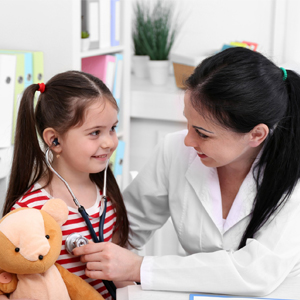Early anomaly scan
Nurturing Early Bonds, Ensuring Precious Beginnings.
The realisation that you are going to be a mother sets in during the 20th week of pregnancy. Your small bulge is undoubtedly attracting a lot of attention, and you must be receiving words of wisdom from all sides. Here is a piece of advice that you must strictly abide by. Don’t skip the anomaly scan because the 20th week is crucial for both the mother and the unborn child.
The majority of the time, pregnancies proceed normally and without difficulty. The foetus’s growth in the womb, however, may occasionally be disturbed. We refer to these as birth defects or foetal abnormalities. It’s important to note that certain congenital anomalies can be detected by ultrasound technology and other diagnostic procedures since this enables doctors to treat the diseases and helps parents plan for the care of their children once they are born.
What is an Anomaly Scan?
An anomaly or foetal abnormality scan, also known as a 20-week pregnancy scan, shows a sideways, black-and-white image of the foetus while thoroughly investigating the infant’s size and physical development. This scan aims to find any significant physical anomalies in the developing infant. The sonographer can see the baby’s face and hands and better understand what is happening within by looking at this image.
The 2D anomaly scan is used to check for birth abnormalities, amniotic fluid positioning, and placental position. It examines the development of the baby’s facial characteristics, the correct development of all the limbs, and the development of all the organs, including the brain, heart, bones, spinal cord, kidneys, and abdomen. The womb (uterus) is also examined for any potential uterine problems.
How is an Anomaly Scan carried out?
A small quantity of gel, which will aid in the conductivity of the ultrasonic waves, will be applied to the woman’s belly by the sonographer during the scan. After that, they will photograph the foetus using a portable probe; the pictures will be shown on a monitor. In addition to measuring the foetus’ size and growth to determine the gestational age, the sonographer will search for any physical issues or anomalies.
After the scan is finished, the sonographer will give the expectant mother a report on the anomaly scan that details the findings. The expecting woman can be sent to a specialist for additional testing or monitoring if any possible issues or anomalies are noted in the anomaly scan result.
Birth Defects that an Anomaly Scan Detects
- Spina bifida, a birth condition in which the spinal cord does not form properly, and anencephaly, a birth defect in which a newborn is born missing sections of the brain and skull, are just a few examples of abnormalities in the structure or development of the brain that can be detected.
- Additionally, it can detect abnormalities in the spine, such as scoliosis, a spinal curvature, or kyphosis, an accentuated upper spine curvature.
- It can identify limb anomalies like webbed fingers or toes or clubfoot, a congenital abnormality in which the foot is twisted out of shape.
- It can detect organ problems, including kidney or heart issues.
- It can also identify chromosomal abnormalities like Down syndrome, a chromosomal disorder that is linked to several physical anomalies.
Benefits of an Anomaly scan
An abnormality scan during pregnancy has various advantages, including the following:
- It is helpful to recognise any physical anomalies or issues with the foetus’s growth, such as variations in the organs, limbs, brain, or spine.
- It is used to establish the foetus’ gestational age, which is crucial for tracking the growth and development of the foetus.
- Additionally, it can measure the amount of amniotic fluid, which is crucial for the growth and development of the foetus.
- It can assist in figuring out the placenta’s location, which is crucial for a successful pregnancy. Preterm labour or bleeding during birth may result from the placenta being too low in the uterus.
Why choose Giggles?
For your lovely journey towards motherhood, you may rely on Giggles. We at Giggles Hospitals have a staff of highly skilled medical professionals who are supported by the most modern facilities and infrastructure. Our medical staff will conduct routine exams to ensure that you and your unborn child are both healthy and active during the pregnancy. In addition to helping you with all the necessary tests to rule out any anomalies, they also provide you with the chance to learn how to deal with the pregnancy’s discomforts.




